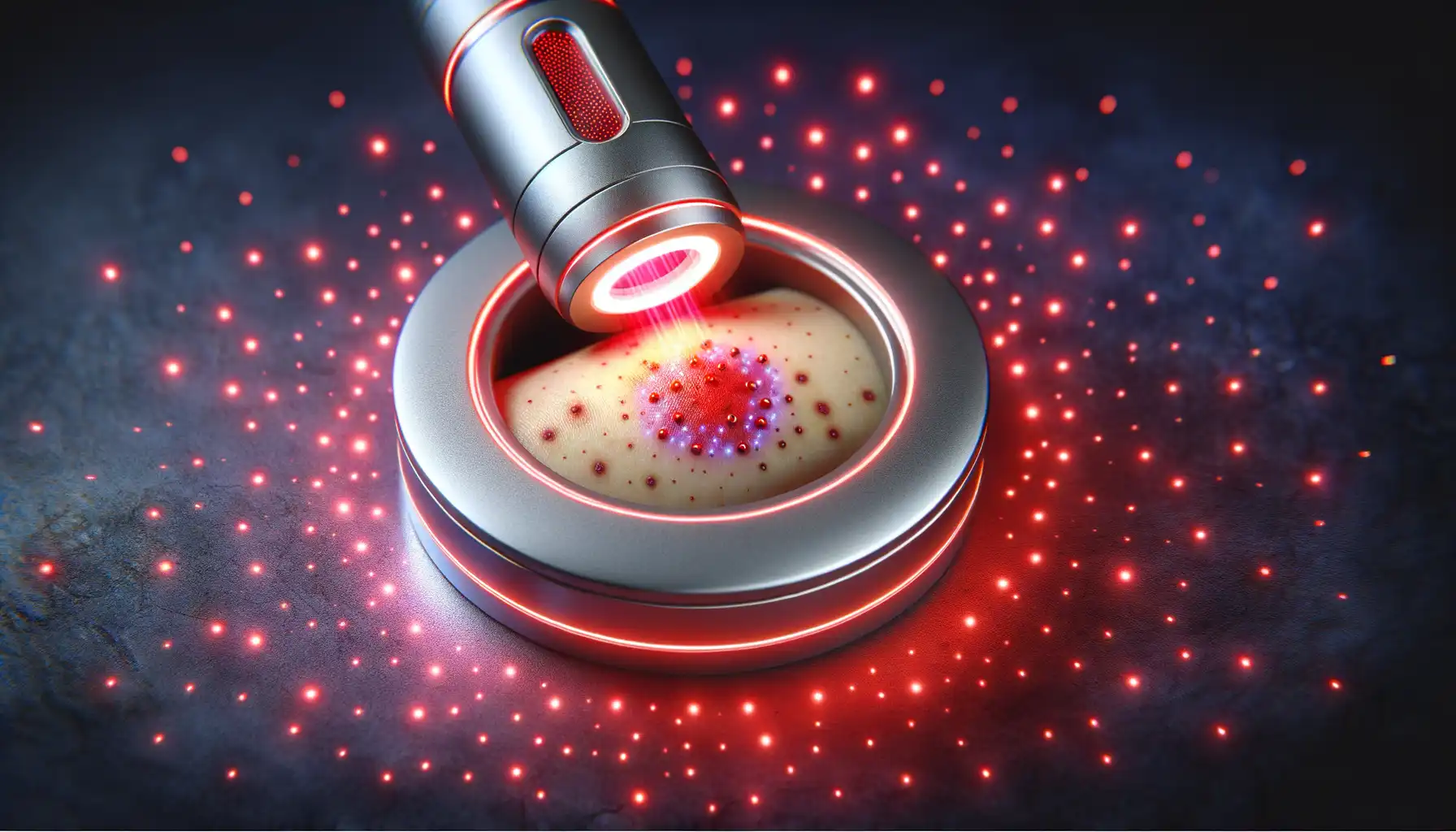Think of it as a gentle, deep-penetrating warmth that can help soothe your system from the inside out. We'll explore how this specific type of heat therapy works, what the science says about its potential to reduce swelling and inflammation, and how you can safely add it to your wellness routine for better recovery and relief.
First, What Exactly Is Swelling?
Before we dive into the solution, let’s talk about the problem. Swelling, or edema, is the buildup of excess fluid in your body's tissues. It often shows up after an injury, but it can also be a sign of chronic inflammation, poor circulation, or an overwhelmed lymphatic system.
Inflammation is your body’s natural defense mechanism. When you sprain an ankle, your immune system sends an army of white blood cells and fluid to the area to protect and heal it. This process causes the familiar signs: redness, heat, pain, and swelling. While acute inflammation is helpful, chronic, low-grade inflammation is a different story. It can contribute to a wide range of health issues and leave you feeling constantly puffy and stiff.
Reducing unnecessary swelling comes down to a few key goals:
Improving blood flow to and from tissues.
Supporting your lymphatic system’s ability to drain waste.
Calming the body’s inflammatory response.
This is where infrared sauna therapy enters the conversation.
How Infrared Saunas Work Differently
An infrared sauna isn't like the traditional steam saunas you might find at a gym. Instead of heating the air around you to an extreme temperature, infrared saunas use light to generate heat that your body absorbs directly. This allows for a much more comfortable experience at lower temperatures (typically 120-150°F or 49-65°C) while still producing a deep, detoxifying sweat.
The infrared spectrum is divided into three categories, each with its own potential benefits:
Near-Infrared (NIR): This wavelength penetrates just below the skin's surface and is often associated with skin health and wound healing.
Mid-Infrared (MIR): MIR can penetrate a bit deeper into the body’s soft tissues, where it may help with pain relief and improved circulation.
Far-Infrared (FIR): This is the star player for reducing swelling. Far-infrared rays penetrate deepest, raising your core body temperature and stimulating several key physiological processes that can help manage inflammation. Most wellness saunas focus heavily on far-infrared technology for this reason.
Mechanisms: How Infrared Heat May Reduce Swelling
So, how does sitting in a warm, light-filled box help with puffiness? The benefits of infrared sauna for inflammation are linked to a few powerful biological responses.
Enhanced Circulation and Vasodilation
When your body absorbs far-infrared heat, your core temperature rises. To cool itself down, your body works to pump more blood to your skin. Your blood vessels widen in a process called vasodilation. This boost in circulation is crucial. It’s like upgrading from a country lane to a multi-lane highway for your blood flow.
Improved circulation helps deliver more oxygen-rich blood and nutrients to tired, inflamed tissues, accelerating repair. Just as importantly, it helps carry away metabolic waste products that can contribute to soreness and swelling.
Support for Lymphatic Drainage
Your lymphatic system is your body’s waste-disposal network. It’s a series of vessels and nodes that collect excess fluid, toxins, and cellular debris from your tissues and transport it away. Unlike your circulatory system, which has the heart as a pump, the lymphatic system relies on muscle contractions and body movement to keep things flowing.
When this system becomes sluggish, fluid can build up, leading to edema and a feeling of heaviness. The deep heat from an infrared sauna can help stimulate lymphatic flow, encouraging the drainage of trapped fluids and reducing swelling. Combining a sauna session with light movement or massage afterward can further enhance this effect.
The Role of Heat Shock Proteins
Exposure to heat stress, like that from a sauna, causes your body to produce special molecules called Heat Shock Proteins (HSPs). These proteins are cellular bodyguards. They help protect cells from damage, reduce oxidative stress, and regulate the inflammatory response. By encouraging the production of HSPs, regular sauna use may help your body build resilience against the stressors that cause inflammation in the first place.
Calming the Nervous System
Pain and inflammation are closely linked to your nervous system. When you're stressed, your body releases cortisol, a hormone that can drive inflammation when it's chronically elevated. The gentle, enveloping warmth of an infrared sauna can help shift your nervous system from the "fight-or-flight" (sympathetic) state to the "rest-and-digest" (parasympathetic) state. This calming effect helps lower stress, reduce muscle tension, and may contribute to lower overall inflammation levels.
Who Can Benefit from Infrared Sauna Therapy?
Infrared heat therapy offers a versatile tool for anyone seeking natural relief from swelling and stiffness.
Athletes and Fitness Enthusiasts: For those who push their bodies hard, infrared saunas can be a game-changer for recovery. Using a sauna after a workout may help reduce delayed onset muscle soreness (DOMS) and clear out the metabolic byproducts that lead to stiffness.
Individuals with Chronic Joint Stiffness: People dealing with conditions that cause chronic joint pain and swelling may find that the deep, penetrating heat helps soothe discomfort and improve mobility.
Sedentary Workers: Sitting at a desk all day can lead to poor circulation and fluid pooling in the lower legs, causing puffiness and discomfort. A regular sauna session can help counteract this by boosting blood flow and promoting lymphatic drainage.
Anyone Seeking General Wellness: Even if you don't have a specific issue, infrared sauna therapy can be a powerful tool for proactive health, helping to manage daily inflammation, support detoxification, and promote relaxation.
How to Use an Infrared Sauna Safely and Effectively
Ready to give it a try? Following a few simple guidelines will help you get the most out of your sessions while staying safe.
Session Length and Temperature
Start low and go slow. For your first few sessions, aim for 15-20 minutes at a lower temperature, around 120-130°F (49-54°C). As your body adapts, you can gradually increase your time to 30-45 minutes and nudge the temperature up toward 150°F (65°C), if comfortable. Listen to your body—more is not always better.
Hydration is Non-Negotiable
You will sweat a lot, so proper hydration is critical. Drink plenty of water before, during, and after your session. Adding a pinch of high-quality sea salt or an electrolyte powder to your water afterward can help replenish the minerals lost through sweat. A general guideline from the CDC is to respond to thirst, but when using a sauna, it's wise to be more proactive.
Who Should Be Cautious?
While generally safe, infrared saunas are not for everyone. If you are pregnant, have a serious heart condition, are taking medications that affect your ability to sweat, or have a condition like multiple sclerosis that makes you sensitive to heat, you should consult your doctor before using a sauna. Anyone with an acute injury (like a fresh sprain) should wait until the initial, severe swelling has subsided before applying heat. Always check with a healthcare professional if you have any underlying health conditions.
Maximizing Your Results: Beyond the Sauna
An infrared sauna is a powerful tool, but it works best as part of a holistic approach to managing inflammation.
Pair with Gentle Movement: Try some light stretching or foam rolling after your sauna session. Your muscles will be warm and pliable, making it an ideal time to improve flexibility and further encourage lymphatic flow.
Balance Your Diet: Pay attention to your sodium and potassium intake. A diet high in processed foods (high sodium) and low in fruits and vegetables (high potassium) can contribute to fluid retention.
Prioritize Sleep: Your body does most of its repair work while you sleep. A relaxing sauna session in the evening can help improve sleep quality, giving your body the time it needs to heal. The National Institutes of Health highlight sleep's critical role in physical health and healing.
Getting Started
You can find infrared saunas at many wellness centers, spas, and boutique fitness studios. This is a great way to try it out without a big commitment. If you fall in love with the benefits, you might consider investing in a small, at-home unit.
When looking for a studio, ask about the type of heaters they use (carbon or ceramic) and whether they offer full-spectrum (near, mid, and far) infrared.
The Takeaway
Persistent swelling can be a frustrating and uncomfortable part of life, but you have options for managing it naturally. Infrared sauna therapy offers a gentle yet powerful way to support your body’s innate ability to heal. By boosting circulation, enhancing lymphatic drainage, and calming your nervous system, it can help reduce inflammation, soothe stiff joints, and accelerate recovery.
Listen to your body, start slowly, and combine your sessions with other healthy habits. You may find that a little consistent heat is exactly what you need to feel lighter, move better, and get back to doing what you love.



